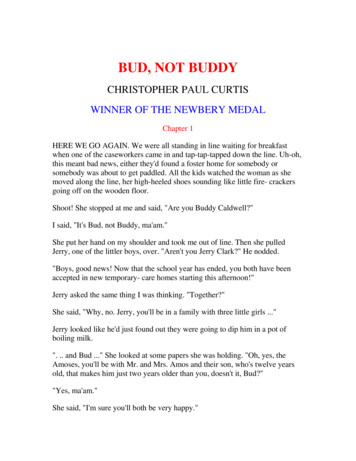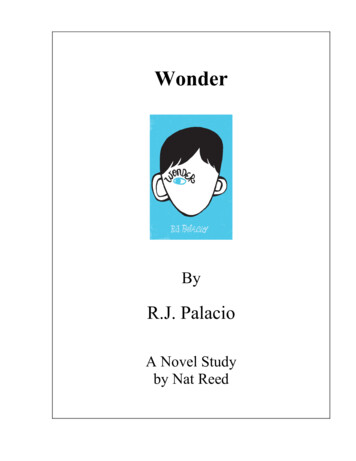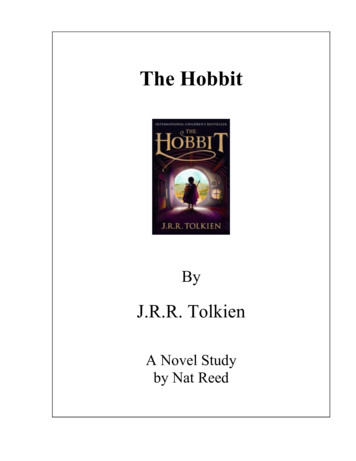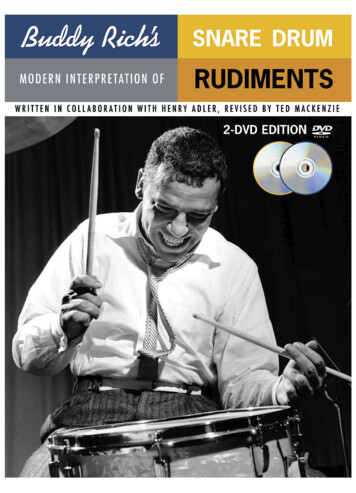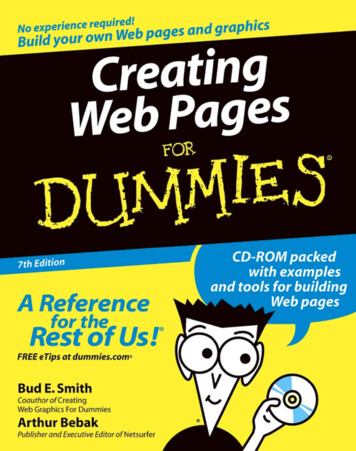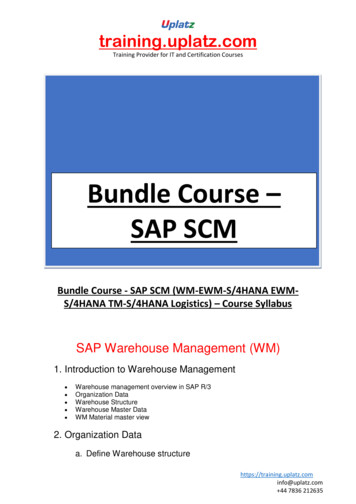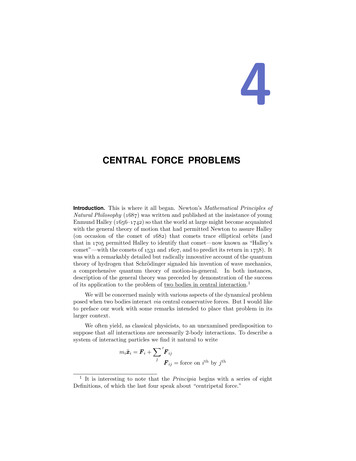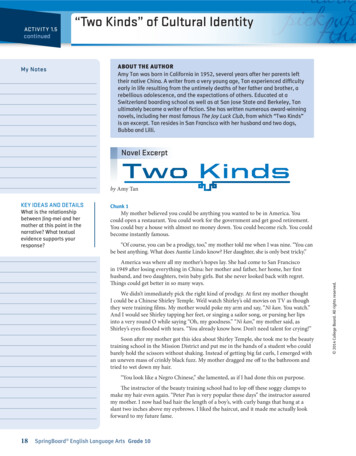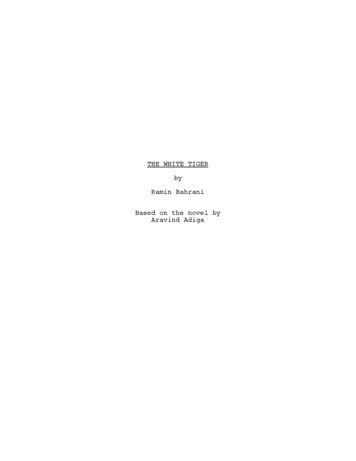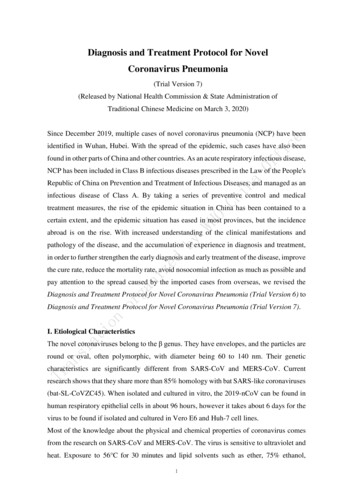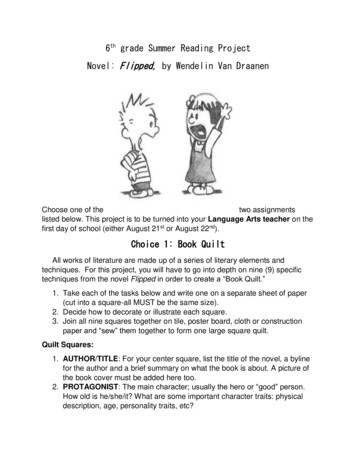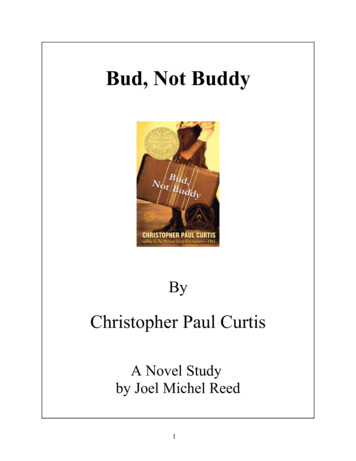
Transcription
Bud, Not BuddyByChristopher Paul CurtisA Novel Studyby Joel Michel Reed1
Bud, Not BuddyBy Christopher Paul CurtisTable of ContentsSuggestions and Expectations . .3List of Skills . . . .4Synopsis / Author Biography . .5Student Checklist .6Reproducible Student Booklet . . .7Answer Key . .56About the author: Joel Reed has over 50 published novel studies and is the coauthor of three novels. For more information on his work and literature, please visitthe websites www.reedpublications.org and www.novelstudies.org.Copyright 2014 Joel ReedAll rights reserved by author.Permission to copy for single classroom use only.Electronic distribution limited to single classroom use only.Not for public display.2
Bud, Not BuddyBy Christopher Paul CurtisSuggestions and ExpectationsThis curriculum unit can be used in a variety of ways. Each chapter of the novel studyfocuses on one or two chapters of Bud, Not Buddy and is comprised of five of thefollowing different activities: Before You ReadVocabulary BuildingComprehension QuestionsLanguage ActivitiesExtension ActivitiesLinks with the Common Core Standards (U.S.)Many of the activities included in this curriculum unit are supported by the CommonCore Standards. For instance the Reading Standards for Literature, Grade 5, makesreference to:a) determining the meaning of words and phrases. . . including figurative language;b) explaining how a series of chapters fits together to provide the overall structure;c) compare and contrast two characters;d) determine how characters respond to challenges;e) drawing inferences from the text;f) determining a theme of a story . . . and many others.A principal expectation of the unit is that students will develop their skills in reading,writing, listening and oral communication, as well as in reasoning and critical thinking.Students will also be expected to provide clear answers to questions and wellconstructed explanations. It is critical as well that students be able to relate events andthe feelings of characters to their own lives and experiences and describe their owninterpretation of a particular passage.A strength of the unit is that students can work on the activities at their own pace. Everyactivity need not be completed by all students. A portfolio cover is included (p.7) sothat students may organize their work and keep it all in one place. A Student Checklistis also included (p.6) so that a record of completed work may be recorded.3
Bud, Not BuddyBy Christopher Paul CurtisList of SkillsVocabulary Development1.2.3.4.5.6.Locating descriptive words / phrasesListing synonyms/homonymsIdentifying / creating alliterationUse of capitals and punctuationIdentifying syllablesIdentify anagrams7.8.9.10.11.12.Use of singular / plural nounsListing compound wordsIdentifying parts of speechDetermining alphabetical orderIdentify personificationIdentify/create similesSetting Activities1. Summarize the details of a settingPlot Activities1. Complete a time line of events2. Identify conflict in the story3. Complete Five W's Chart4. Identify cliffhangers5. Identify the climax of the novel.6. Completing a story pyramidCharacter Activities1. Determine character traits2. Complete a character comparison2. Relating personal experiencesCreative and Critical Thinking1.2.3.4.5.ResearchWrite a newspaper storyParticipate in a talk showConduct an interviewWrite a short story.6.7.8.9.Write a description of personal feelingsWrite a book reviewComplete an Observation SheetWriting poetry.Art Activities1. A Storyboard2. Create a collage3. Create a topical sketch4. Design a cover for the novel5. Create a comic strip4
Bud, Not BuddyBy Christopher Paul CurtisSynopsisIt's 1936 in Flint, Michigan. Times may be hard, and ten-year-old Bud may be amotherless boy on the run, but Bud's got a few things going for him:He has his own suitcase full of special things.He's the author of Bud Caldwell's Rules and Things for Having a Funner Life andMaking a Better Liar Out of Yourself.His momma never told him who his father was, but she left a clue: flyers advertisingHerman E. Calloway and his famous band, the Dusky Devastators of the Depression!!!!!!Bud's got an idea that those flyers will lead him to his father. Once he decides to hit theroad and find the mystery man, nothing can stop him – not hunger, not fear, not vampires, noteven Herman E. Calloway himself. (The Publisher – Random House)A complete synopsis and other helpful reviews can be found on the following website:http://en.wikipedia.org/wiki/Bud, Not Buddy(Warning: Website contains plot spoilers)Author BiographyChristopher Paul CurtisChristopher Paul Curtis was born in Flint, Michigan in 1953.Here he attended both elementary and secondary school. Helater graduated from the University of Michigan and theUniversity of Windsor. Christopher spent thirteen yearsworking in a car assembly plant and assorted other jobs.He took a year off work to write his first novel, The Watsonsgo to Birmingham - 1963. Other award-winning books by Mr.Curtis followed, including Bud, Not Buddy and Elijah ofBuxton, which were both Newbery winners. Christopher andhis wife, Kaysandra, live in Detroit. They have two children.5
Bud, Not BuddyBy Christopher Paul CurtisStudent ChecklistStudent Name:AssignmentGrade/Level6Comments
Bud, Not BuddyBy Christopher Paul CurtisName:7
Bud, Not BuddyBy Christopher Paul CurtisChapter 1 - 2Before you read the chapter:Briefly predict what you believe the plot-line of Bud, Not Buddy will be about.Vocabulary:Write a list of three different antonyms* for each of the following words.WordAntonym 1Antonym 2BuddyOrderImmenseBraveWhisper* A word or phrase that means the opposite of another word.8Antonym 3
Questions1. Describe the setting of the story as Chapter One begins.2. Why was Bud fearful about having an older brother?3. Briefly describe the incident that took place at the beginning of Chapter Two.4. What caused Bud to strike Todd Amos?5. What do you think Patricia Briggs meant when she said the following: “Hard truths canbe dealt with, triumphed over, but lies will destroy your soul.”9
Language ActivityA.There are many writers that enjoy using alliteration – a literary device is where the authorrepeats the same sound at the beginning of several words. Here's an example of an alliteration:“grousing, grouching, grumbling, griping about something or other."Using your imagination, create your own examples of alliteration from the following topics.Each example must contain a minimum of three words.The sound of a piano.The sound of a trumpet.The sound of a violin.B. A simile is a comparison using the words “like” or “as”.Here's an example from thesechapters: "Todd's next punch crashed into the side of my ear and I fell on the floor and pulled myknees up to my chest and crossed my arms in front of my head like a turtle in a shell."What two things are being compared in this example?Invent two of your own similes comparing two different things from your own imagination:a)b)10
C. HomonymsHomonyms are words which sound the same but have different meanings. An example is beatand beet. These chapters feature words which are examples of homonyms. In the chart below,create sentences which show the meaning of each set of homonyms.Example 1HomonymsSentence1. Band2. BannedExample 2HomonymsSentence1. Reed2. ReadD.Copy out any three or four sentences from this section in the novel underlining thenouns and circling the verbs.11
Extension ActivityStoryboardA storyboard is a series of pictures that tell about an important event in a story. Astoryboard can tell the story of only one scene – or the entire novel.Complete the storyboard below illustrating the events described in Chapters 1-2. Youmay wish to practice your drawings on a separate piece of paper.12345612
Bud, Not Buddy By Christopher Paul Curtis Chapter 1 - 2 Before you read the chapter: Briefly predict what you believe the plot-line of Bud, Not Buddy will be about. Vocabulary: Write a list of three different antonyms* for each of the following words. Word Antony
